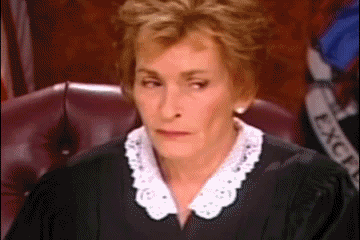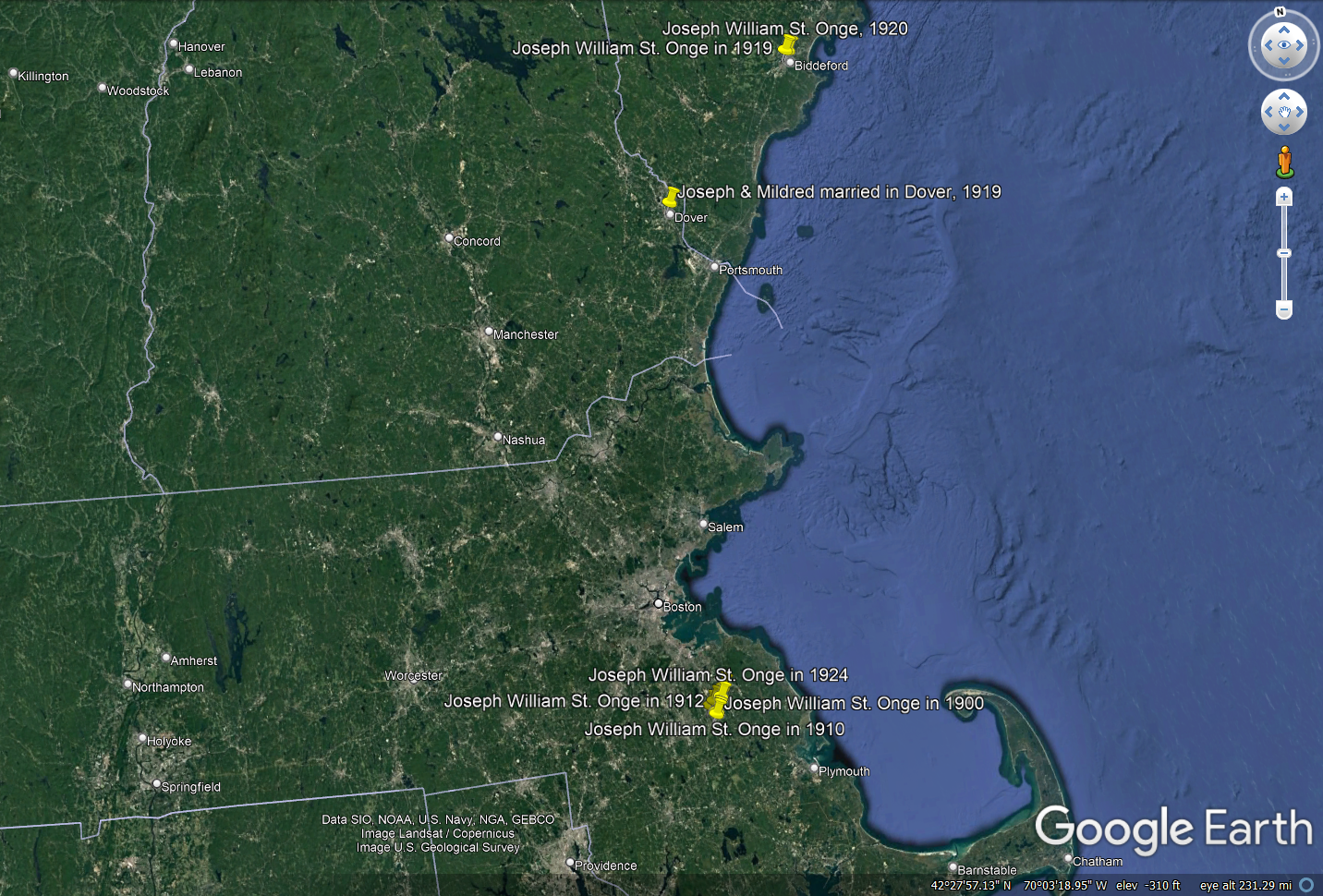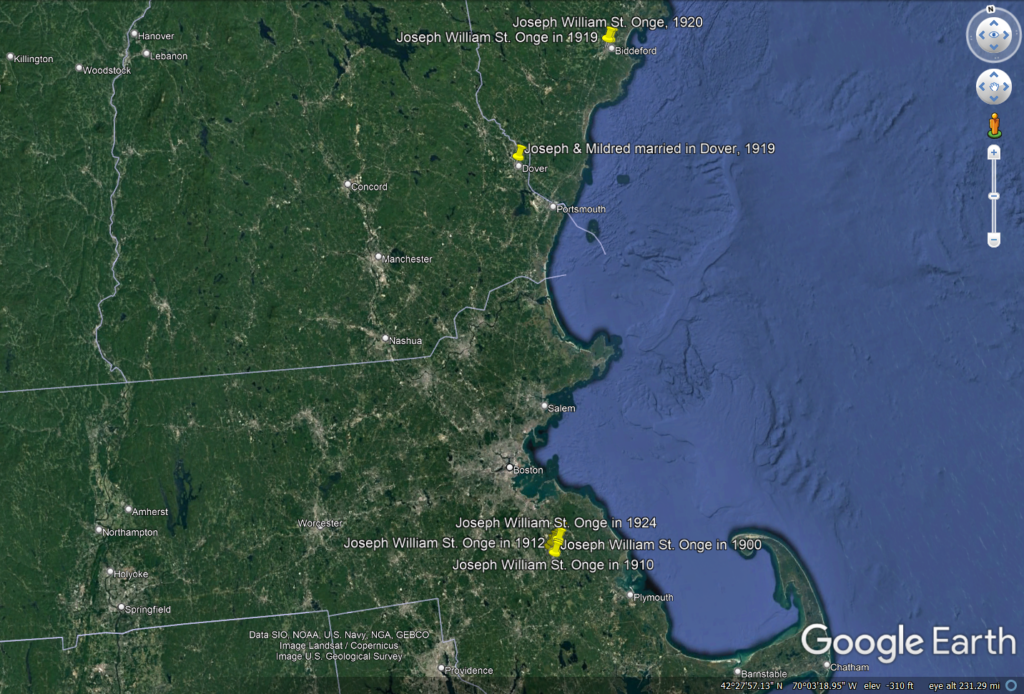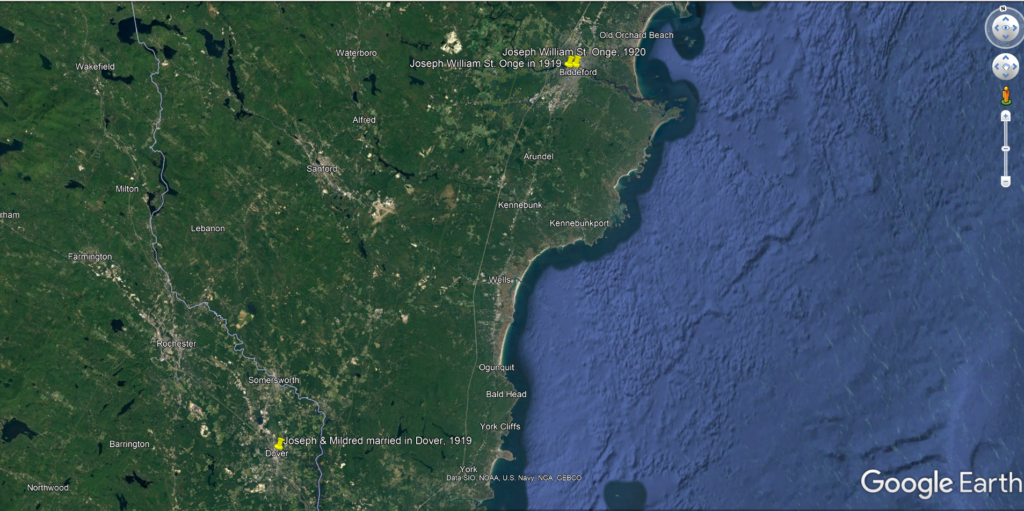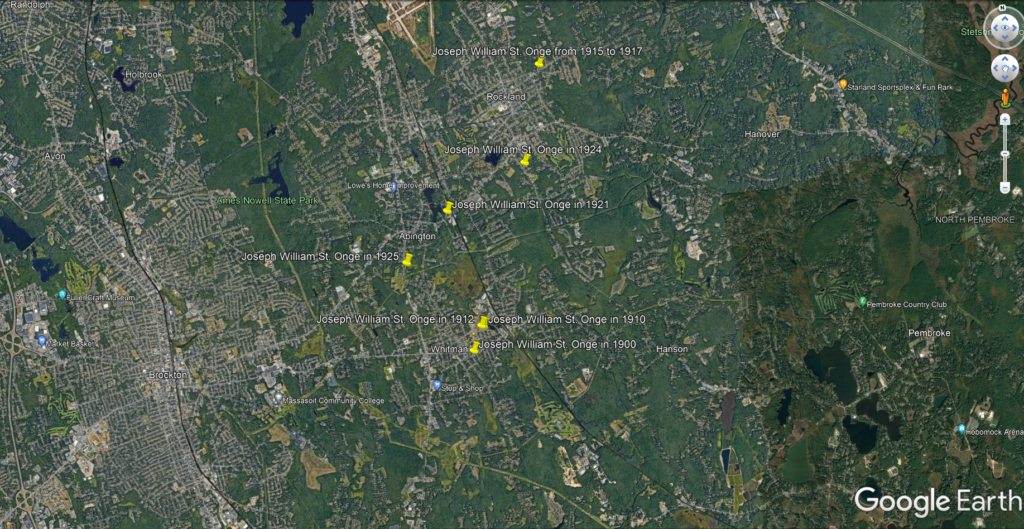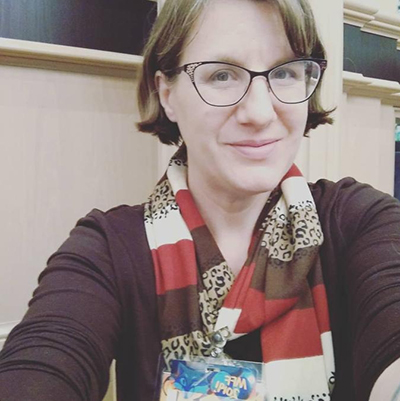For Week 8 of 52 Ancestors in 52 Weeks, the topic is courting.
Well, I have to say I’m not sure I have any romantic stories to tell. Many people in my family seem to do better the second (or third or fourth) time around in partnerships. That includes me. I am currently in a polyamorous relationship with two wonderful partners, and worlds happier than I was in my first marriage. I think that’s because we really do outgrow other people or make ill-considered choices when we’re younger, or a combination of both.
However, that’s not the kind of courting I’m going to talk about this week, because I don’t think my story is interesting (I got to know both of my significant others through playing D&D). Instead, I’m going to write about my favorite topic again, great-great grandma Emma Anna (Murphy) (Regan) Shaw.
What is it about her life that fascinates me so much? I don’t know. I think it’s because who she is remains a mystery, despite having many of the facts of her life from birth to death. Again, I wish I had a picture of her, as if that could somehow magically give me some kind of insight into her personality.
This newspaper article from 1910, however, tells me more about her as a person than I’ve ever been able to learn anywhere else:
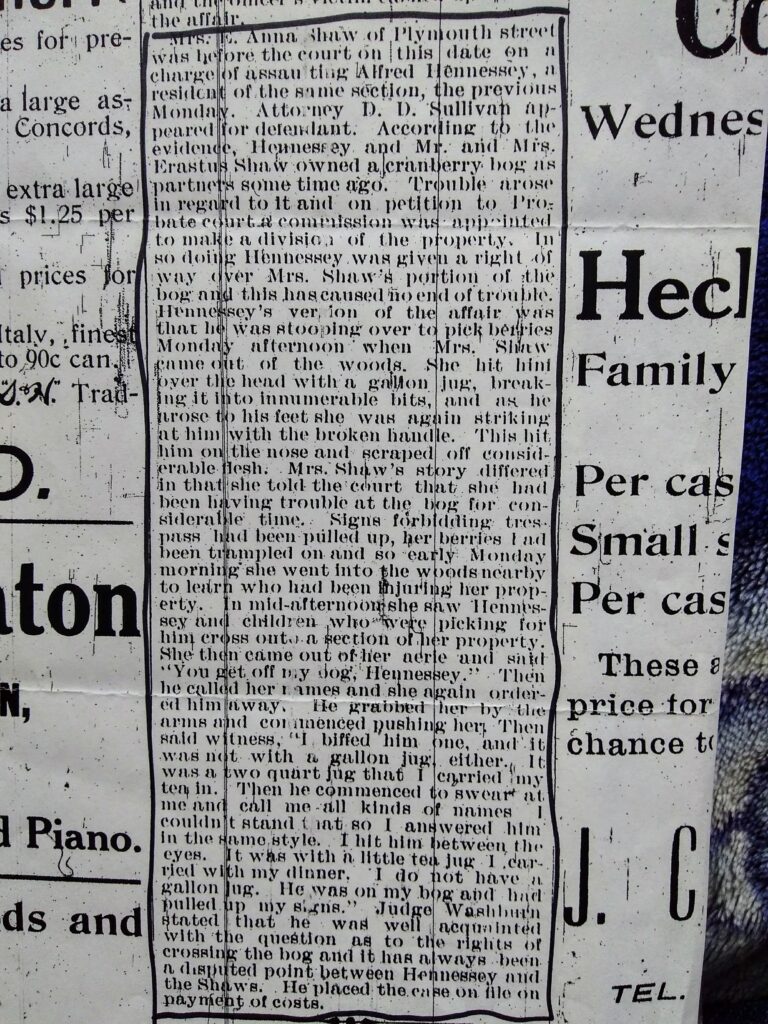
To sum up the article, Emma and my great-great grandfather, Erastus, co-owned a cranberry bog with a man named Alfred Hennessey. When they had disagreements about it, the land was partitioned, and Hennessey was given a right of way over Emma’s portion of the bog.
According to Hennessey, she wasn’t too keen on this, because when she saw him out there picking berries one day, she whacked him over the head with a gallon jug, which broke, and then hit him again with the handle that remained in her hand.
Emma’s story differed in that she intentionally went out to watch for whoever was trespassing and saw Hennessey and some children picking berries for him. She then confronted him to demand that he leave, and she claims he responded by calling her names. Supposedly, he grabbed her by the arms and pushed her, so Emma “biffed him one” with the jug she had with her – though she also claimed it was a quart, not a gallon. When he swore at her, she then hit him between the eyes.
I love that her testimony is quoted verbatim close to the end of the article, because regardless of the kind of jug she had when she hit the plaintiff, she was clearly a feisty lady who didn’t take crap from anyone! Even funnier is the statement by the judge that he was well-acquainted with the dispute over the bog. Do you think he was having a Judge Judy moment while these two fought over the land?
